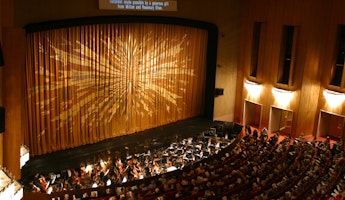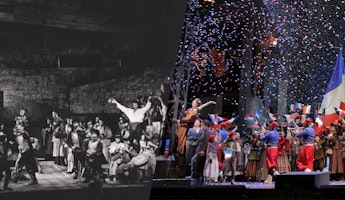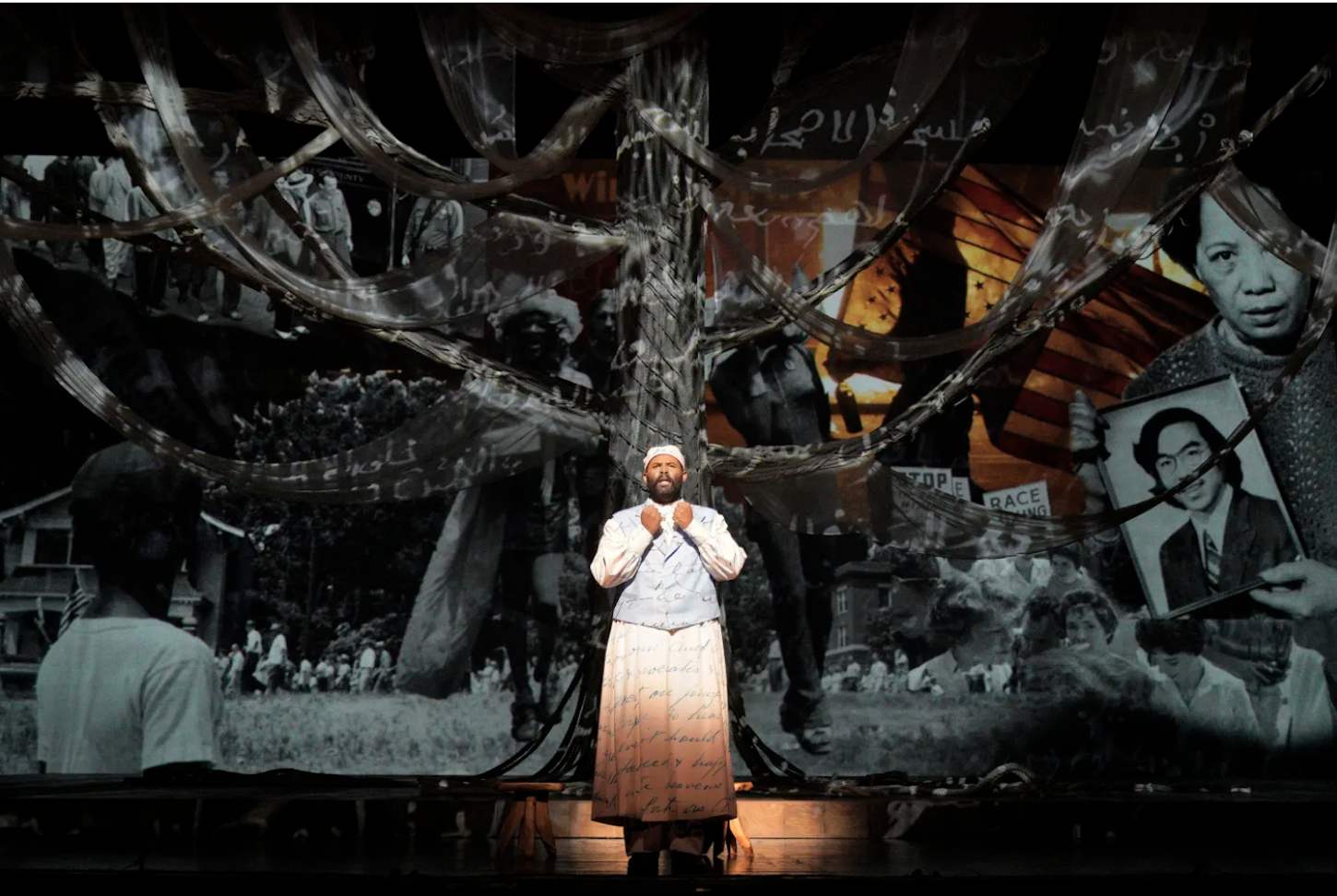Blog
November 8, 2022
From Page to Stage: Omar
My name is Truelove Arhin and I'm the content and media specialist here at LA Opera. This is a personal review and comparison piece; I am in no way a professional opera reviewer.
After watching the phenomenal operatic adaptation of Omar Ibn Said’s empowering yet tumultuous life, I was so impressed by what composer-librettist Rhiannon Giddens did. She found this story, decided that others needed to know it as well, and took it a step further to tell it through an opera medium complete with original songs, music, and a stage production with so many subtle details. I was so intrigued and wanted to find out more about Omar, the man whose life's story made it to an opera stage, something that I'm sure he would've never imagined happening almost 200 years later. I figured, what better way to start than by reading his autobiography and the actual words that the opera is based on. After reading it, I decided to compare his written accounts to what Rhiannon Giddens and co-composer Michael Abels artistically brought to life on the stage and to share my overall thoughts.
In his autobiography O Ye Americans, Said starts with the opening sermon of the Holy Islamic text, the Quran, before he begins sharing his later experiences. In the opera, leading tenor Jamez McCorkle first enters the stage in his everyday streetwear attire; we see him transform into Omar as he begins a melodic prayer to Allah. In Omar Ibn Said’s writings, his devotion to his faith is evident as he continuously references his God and holy scriptures throughout the narrative; it is the essence of his soul which is also kept and emphasized in the opera.
The drama truly begins when Omar is kidnapped from West Africa and forced aboard a ship bound for South Carolina. As he recalls in his account, “Then there came to our place a large army, who killed many men, and took me, and brought me to the great sea, and sold me into the hands of the Christians, who bound me and sent me on board great ship and we sailed upon the great sea a month and a half, when we came to a place called Charleston in the Christian language. There they sold me to a small, weak, and wicked man, called Johnson, a complete infidel, who had no fear of God at all. Now I am a small man, and unable to do hard work so I fled from the hand of Johnson and after a month came to a place called Fayd-il.” With the atmospheric musical scoring of the orchestra, the opening scene’s set design of the West African architecture and the slave ship projection, Kaneza Schaal, the director of Omar, did a great job of taking those few sentences and creating a visual that allows us to feel and imagine what Omar was describing.
When Omar is brought to his second owner, James Owen, the opera features what seems to be a jubilee complete with a dance number and singing. This isn’t included in Said’s original text, but certain added details like that are used to keep the stage production alive and entertaining as well as move the plot along. Another detail I noticed that was left out of the operatic adaptation is that in his autobiography, Omar and “Jim” had a close relationship, and he even gives personal details about the Owen family, like each of their kids’ names, and even shares information about Jim’s brother’s family. It appears, based on his writings, that Omar felt like family. He even states that “I continue in the hand of Jim Owen who never beats me, nor scolds me. I neither go hungry nor naked, and I have no hard work to do. I am not able to do hard work for I am a small man and feeble. During the last twenty years I have known no want in the hand of Jim Owen.” Which brings some comfort to the story. It would’ve been intriguing to see a bit more of that relationship in the stage production.
Omar’s faith is what held him through his harrowing journey through captivity and then enslavement. In the stage production, there is a dramatic shift into his conversion to Christianity using his costumes, but in his autobiography, there didn’t seem to be much emphasis on the change. He initially refers to his god as “God” but even after his conversion there was nothing different in the way he spoke about his faith except the name. However, the use of costuming and colors to indicate the change is genius.
The production overall is very faithful to the autobiography, with a few additions that help bring dramatic flair to the story. To read Omar Ibn Said’s autobiography and make your own comparisons, click here.








/03-cosi/_dsc0996_pr.jpg?format=auto&fit=crop&w=345&h=200&auto=format)
















